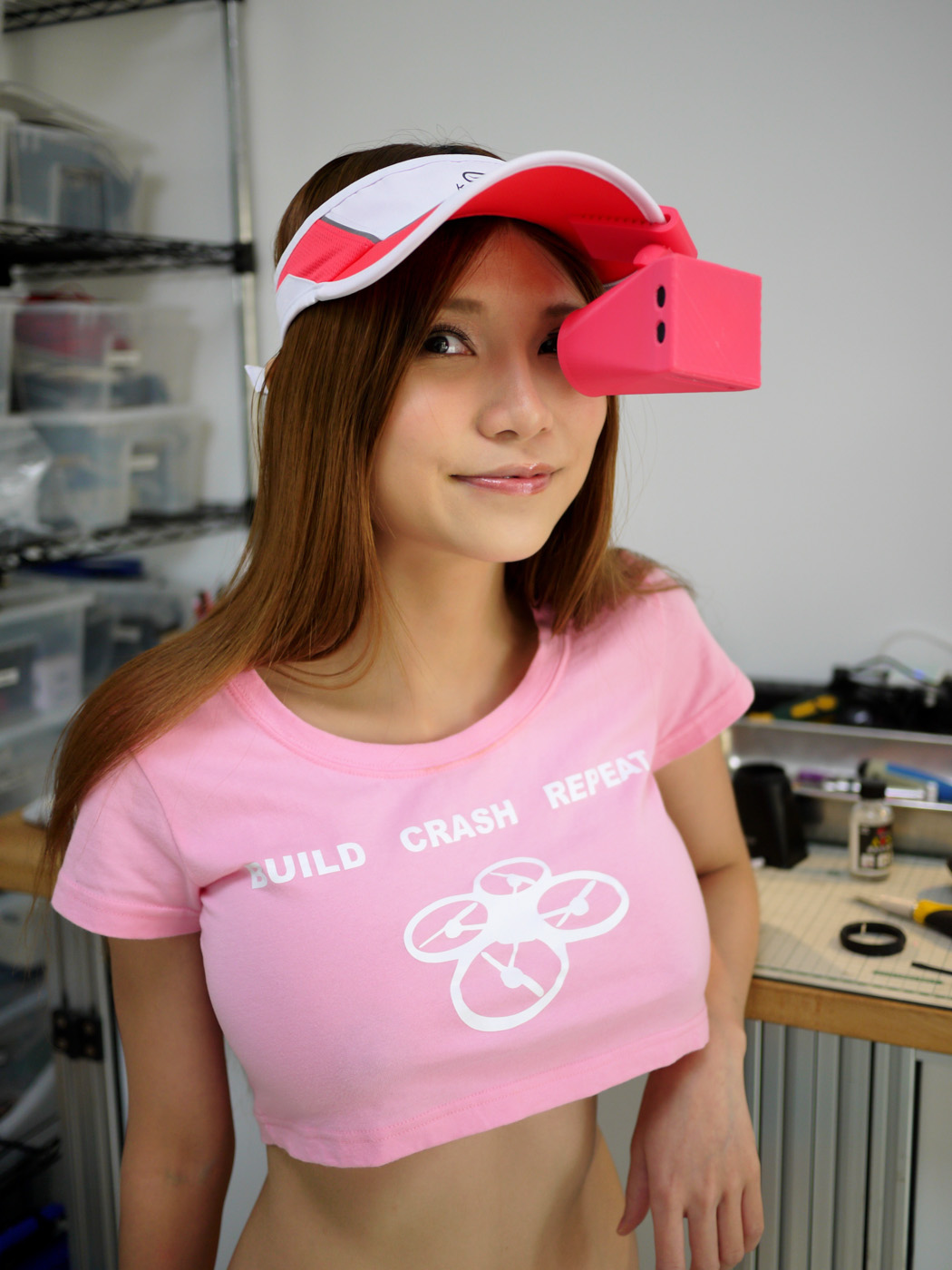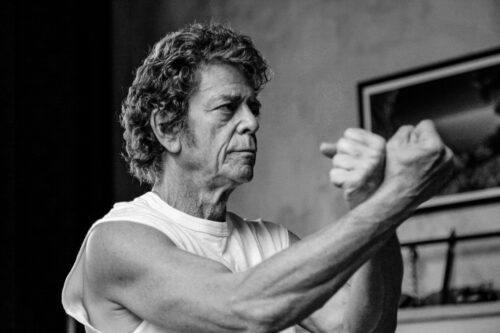Q&A with Sexy Cyborg, China’s most notorious Maker
Naomi Wu creates new gadgets in the workshop of the world and roams the streets of Shenzhen dressed in a way that “foreigners have issues getting past.”

Her name is Naomi Wu, aka Sexy Cyborg. She may be China’s most prominent independent “Maker” — a member of a global DIY hacker subculture that Wikipedia says “revels in the creation of new devices as well as tinkering with existing ones.”
Wu is a prolific tweeter, with more than 30 thousand followers, and publishes videos of her exploits in Shenzhen on YouTube. She answered a few questions from The China Project by email.
The China Project: How long have you lived in Shenzhen, and where are you from originally?
Naomi: I’m a Shenzhen local, born, raised, and educated — never left Asia.
The China Project: How did you get into Maker culture and 3D printing?
Naomi: Started off as a self-taught coder. Three years ago, there was a window where pretty much anyone with basic skills in Ruby on Rails (a web development framework) could easily get work online. Once you are used to learning online, the sky is the limit. From coding, I became more exposed to the local hardware development scene, which, of course, ties into the Maker movement. 3D printers are one of the primary tools of the Maker movement.
The China Project: If you had enough money, time, and the right technology, what do you want to make most of all?
Naomi: A comprehensive, interactive, open-source, primary school education in cross-platform digital form. Something to make sure that all the rural kids in China have access to a solid education, despite shortages of teachers and resources. Everything from math, reading, and writing to health education, first aid, and preparing nutritious meals with minimal resources, etc. The core of primary education has barely changed in decades, there’s no reason large parts of it can’t be automated and taught more efficiently and scientifically.
The China Project: Is Shenzhen a good place to be a Maker? Why?
Naomi: In some respects. The actual community of authentic, Western-style Makers is very small — and most are foreigners. So you miss out on the social aspects that exist elsewhere. A “Show Your Hack Day” with Western Makers is a few beers and a casual “Oh, there’s this little thing I’ve been working on.” For Chinese, it’s an endless PowerPoint on what is really a finished product someone engineered for them — the same sort of things we’ve always done and not really representative of progress.
On the other hand — next-day delivery of anything you can imagine. So if you are like me and prefer to work alone, or with online help, it’s great.
The China Project: Do you think people are innovative in Shenzhen?
Naomi: Some are. Unfortunately, innovation is poorly incentivized because bosses take all the credit and engineers are looked down on. So a lot of people sit on ideas until they can afford to start their own company and benefit.
The China Project: From reading your Twitter feed, it looks like to me that you are not invited to Maker events in Shenzhen, although they do fly in a lot of foreigners to present. Who organizes these events? What are the problems with these events? Why do you think you are excluded?
For Westerners buying @szoil001 & @chaihuomaker's bullshit that I'm blacklisted because I'm not "family friendly" this is ok at Maker Week🙄😡 pic.twitter.com/TPVkMetN2v
— Naomi Wu 机械妖姬 (@RealSexyCyborg) September 17, 2017
Naomi: Mostly it’s an economic issue. All Chinese know we have to become more innovative — copying the way we do is just not sustainable. In my opinion, the Chinese government has very sensibly chosen to devote significant resources to this. The problem is that there are a lot of clever businessmen who are excellent at taking advantage of these kinds of resources — and diverting them away from their intended recipients.
Shenzhen has over 600 Makerspaces registered — more than all of Europe. But their collective output — projects posted, community engagement — is less than even one small town’s Makerspace in the West. Most of them are just empty office spaces outside of a few staged yearly photo ops. Much of this includes hiring foreign Makers, or just the usual professional white faces, to pose or vouch for the authenticity of the space.
These Makerspaces don’t exist by renting desks or collecting dues like others around the world — their income is usually entirely derived from grants, which they all compete with one another for. So there is none of the cooperation that is the hallmark of Western Hacker/Makerspace culture. These are businesses, and businesses do not advertise their competitors to the world.
In my case, I’m not only making more projects than them and am more engaged with the international community, I’m doing it without government support — which undermines their whole business model. So from a business point of view, there’s nothing to gain and much to lose by supporting me or allowing me to be seen at their events (and they’re not above having security try to throw me out).
Of course, there is sexism as well, it’s something of a face issue, since they can’t find a more prominent guy to hold up as an example of Making. More than one administrator has admitted it would be much easier if they could say “We also have a female Maker,” not “We only have a female Maker.”
The China Project: Aside from problems with Maker events in Shenzhen, can you tell us about the Maker movement more generally, and how China fits in — or does not fit in — to it?
Naomi: There’s a lot of talk that occurs with Chinese thinking that Making is somehow a foreign thing. This is, of course, nonsense. The problem is that the businessmen charged with promoting Making and innovation in China have never done either — so they can’t evangelize effectively.
At its core, Making is quite simple. It is an activity for the cultivation of specific attributes. Like painting or photography to cultivate better artistic sensibilities. Tai Chi to cultivate patience and physical attributes. Making things casually as a hobby — spotting problems, solving those problems, like all forms of play, makes you better at these things. Creativity, like everything else, improves with play and practice. Making is simply physical and mental play that cultivates creative attributes.
We Chinese just often have a lack of patience for process, people want to skip steps and jump to the end — just make a marketable product. “I’m too busy for a hobby like Making,” they say. Which is fine, but if they are too busy to exercise, or read books, they should not be surprised if they fail to develop the personal attributes those activities can provide.
The China Project: You say yourself that you are “well known in my city for my eccentric appearance and dressing a bit crazy.” Can you talk about why you dress as you do, and the reactions you get both from Shenzhen people and others?
Naomi: Shenzhen people enjoy it, there are smiles everywhere. Selfies with people every time I go out. I have yet to hear anything negative. Foreigners have issues getting past it, of course.
The China Project: How do you see Maker culture in China evolving in the next decade?
Naomi: I don’t think it will survive. There’s an unfortunate consensus forming that creativity is not a Chinese attribute. That it can only come from foreigners or be learned abroad. Shenzhen companies hire foreign creative professionals or overseas Chinese. So we are seeing the emergence of a creative class — that it is mostly the upper-middle class that can afford an overseas education. I don’t see this as being scalable or a real solution to our creativity deficit.













